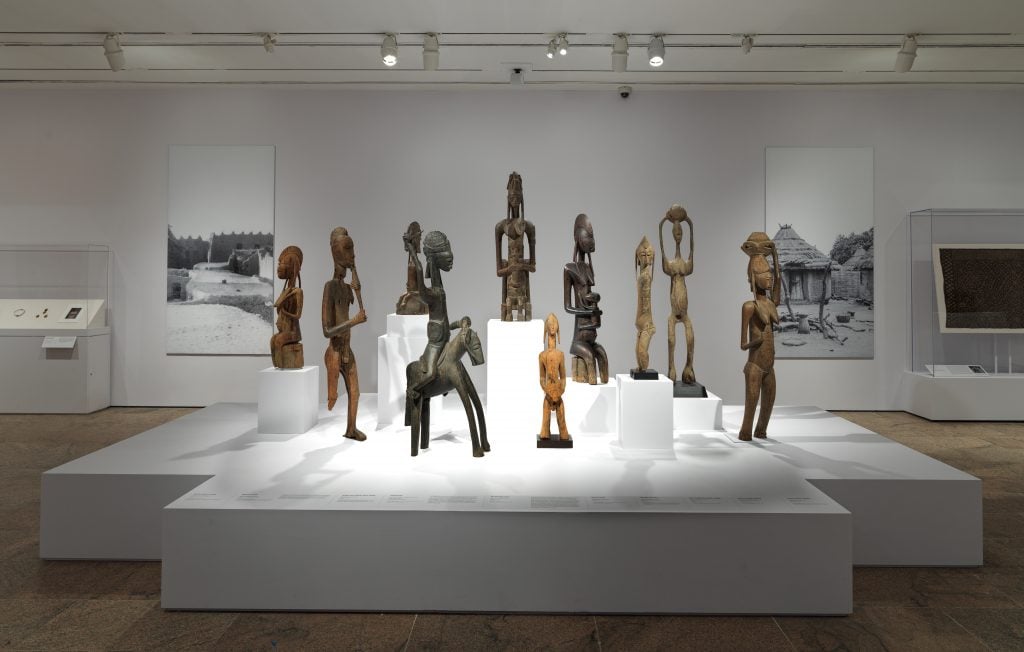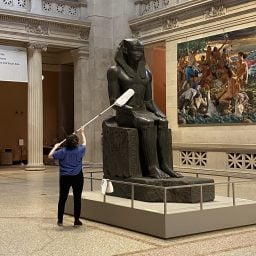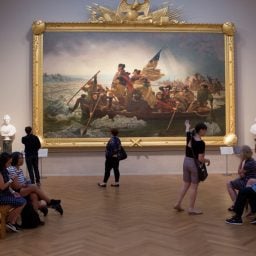At the dawn of the first millennium, bustling trade routes crisscrossed the region known as the Western Sahel, a vast swath of land that inches up to just below the Sahara Desert and encompasses what is today Senegal, Mali, Mauritania, and Niger.
Four great empires emerged and thrived in this dynamic region over the centuries—Ghana (300–1200), Mali (1230–1600), Songhay (1464–1591), and Segu (1640–1861)—forever imparting it with an incredible material culture.
Now, that legacy of the region’s transformative impact on visual arts is being examined in “Sahel: Art and Empires on the Shores of the Sahara,” currently on view at the Metropolitan Museum of Art. The 200 objects on view range from carved stone sculptures to textiles to illuminated manuscripts, which altogether detail the rise and fall of vast, complex civilizations, along with the arrival Islam.
From the myriad objects on view, the exhibition’s curator, Alisa LaGamma, has chosen seven artworks that offer a succinct glimpse into the region’s dazzling history. Below, LaGamma takes us through the works and explains their significance.
Female Body (Venus of Thiaroye)
Senegal
Before 2000 B.C.
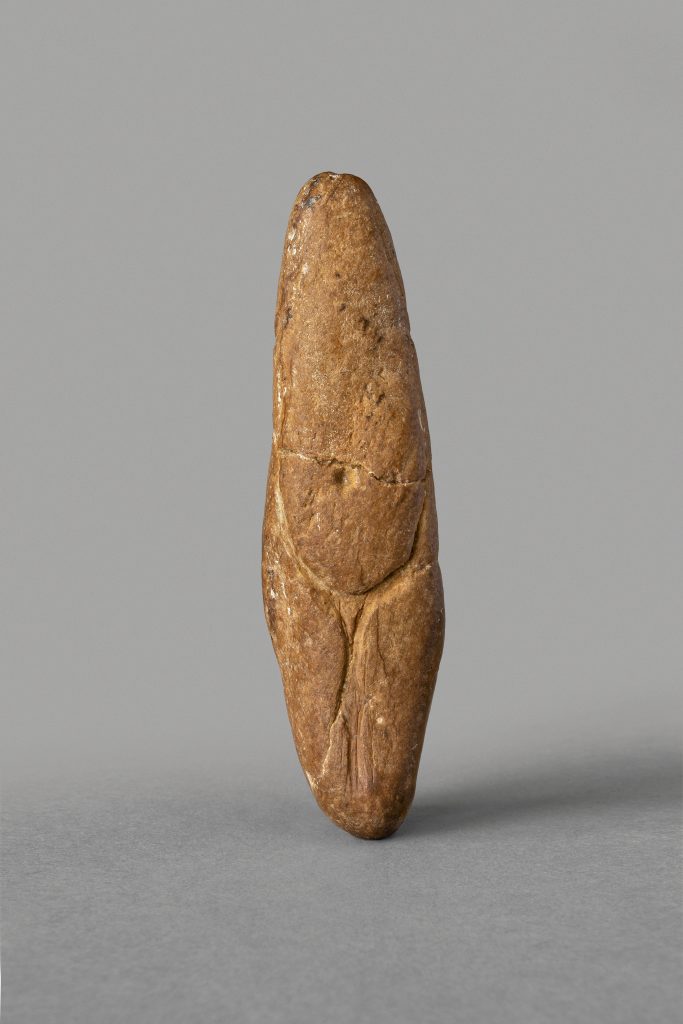
Female Body (Venus of Thiaroye), Senegal (Pre-2,000 B.C.) Sandstone. Collection of Institut Fondamental d’Afrique Noire Cheikh Anta Diop, Dakar, Senegal. Photo by Antoine Tempeì.
The Beginnings of Figuration: “As many as 4,000 years ago, an individual recognized a human form in the contours of this pebble. He or she underscored that association through the addition of a few lightly inscribed lines. Despite the minimal intervention, that maker’s act transformed an inert mineral formation into a representational artifact. The truncated lower body of a female figure emerges from simple lines that circumscribe the contours of a rounded belly punctuated by a prominent navel above thighs bisected by a broad vertical channel. Its headless attenuated summit suggests the merging of male and female sexual attributes.”
What You Need to Know: “The earliest Sahelian populations were highly mobile pastoralists who measured wealth in cattle and semi-precious stones. This miniature tribute to human reproduction that fits in the palm of one’s hand attests to creativity as a response of the human imagination to the natural world. It was likely deposited with its owner’s most treasured possessions within one of the thousands of man-made earthen tumuli left behind as burial markers that have reshaped the landscape. Its chance recovery suggests the role of figuration in visualizing symbolic thought concerning existence and procreation among the Sahel’s first settlers.”
Megalith
Kaolack region, Senegal
8th–9th century
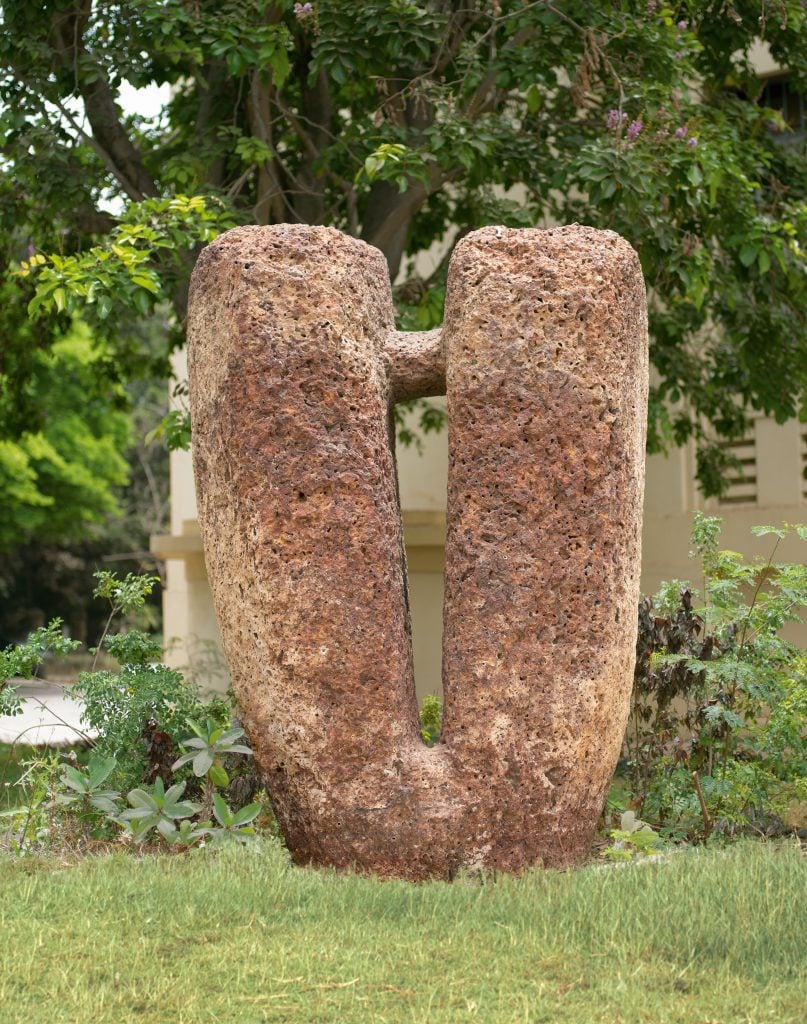
Megalith Kaolack region, Senegal (8th–9th century). Lateritic conglomerate. Collection of Institut Fondamental d’Afrique Noire Cheikh Anta Diop, Dakar, Senegal Photo credit: Antoine Tempeì.
Monuments Like No Others: “The Sahelian imagination gave rise to its own distinctive and highly original landmarks. In order to pay tribute to their grandeur, it was fitting that we transported one of these from the entrance to the IFAN Museum in Dakar to the entrance of the exhibition in New York City. As early as the 8th century, the creators of thousands of such massive lithic monuments deployed iron tools to hew them from lateritic soil. Once released from that hardened ferrous earth, they were hoisted upright and positioned in the landscape within symbolic configurations. Ninety-three such sites situated along the Gambia River, which predate the arrival of Islam through trans-Saharan trade, likely defined ceremonial gathering places.
Musical Inspirations?: “While the specific significance of these striking open-air installations have long been forgotten, today they are the focus of the archaeological investigation and protected as UNESCO World Heritage sites. Contemporary residents of the region have speculated that the highly original design of this rugged landmark may be that of a lyre. That theory complements the enduring importance played by music as a regional means of expression through which historical narratives are relayed by griots or bards.”
Equestrian
Bura-Asinda-Sikka, Niger
3rd–10th century
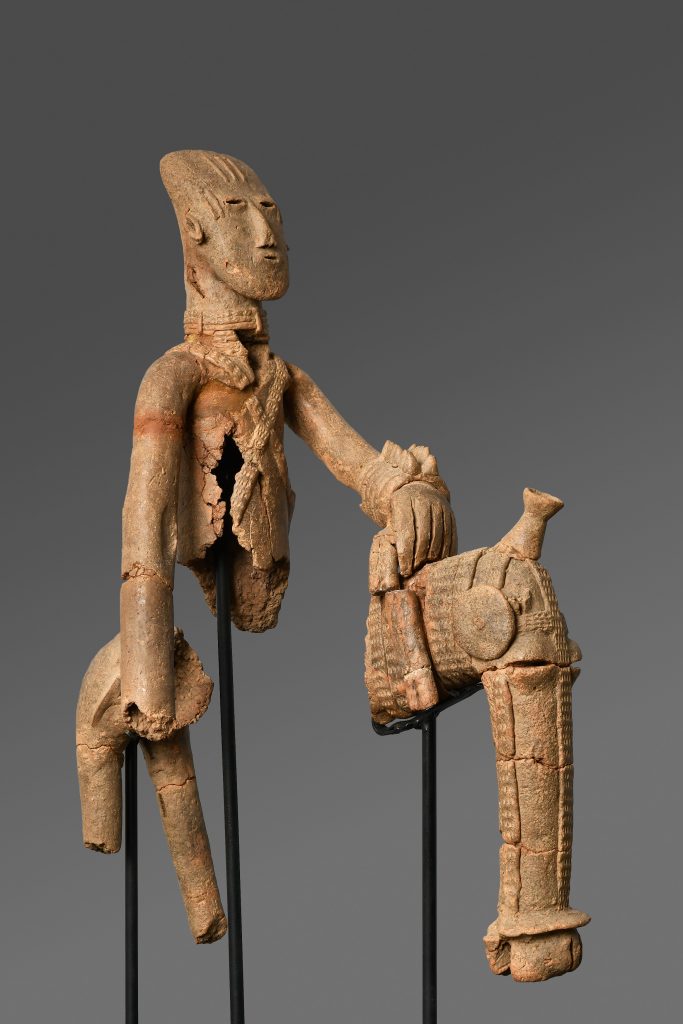
Equestrian Bura-Asinda-Sikka Site, Niger (3rd–10th century) Terracotta. Collection of Institut de Recherches en Sciences Humaines, Universiteì Abdou Moumouni de Niamey, Niger. Photo credit: Maurice Ascani.
Reimagining the Equestrian Monument: “The equestrian has been a major subject of exploration by artists in the Sahel going back to antiquity independent of its Western corollaries. This commemorative tribute to a mounted warrior is among the earliest known of these regional visualizations of power and authority. Horses were prized commodities imported from the Arab world as early as the first millennium B.C. Some historians have suggested that horseback riding was largely ceremonial until the 13th century, when cavalries, such as those of the Mali empire, gave regional leaders a strategic advantage in military combat.”
Sahelian Conquering Heroes: “Modeled in lightly fired clay as early as the 3rd century, this sculpture was originally positioned above the resting place of a burial site within a necropolis, or city of the dead. The depiction is striking for the highly expressive exaggeration of the rider’s outstretched arm and the elongation of the horse’s muzzle accentuated with elaborate bracelets and harness. In the exhibition, this commanding Bura captain is a poised and regal presence whose piercing gaze looks beyond us into eternity. He leads a cavalry of riders shaped by artists in an array of media including cast metal and carved wood.”
The Rao Pectoral
Rao/Nguiguela, Senegal
12th–13th century
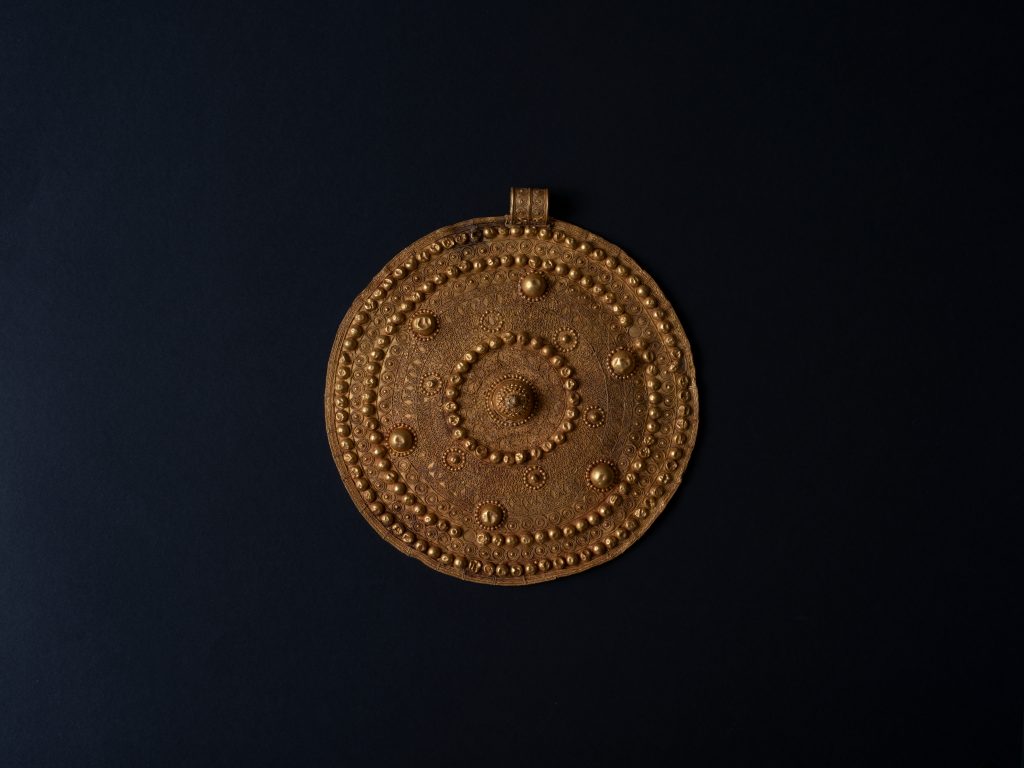
Pectoral (The Rao Pectoral) Rao/Nguiguela, Senegal (12th–13th century) Gold. Collection of the Institut Fondamental d’Afrique Noire Cheikh Anta Diop, Dakar, Senegal. Photo by Antoine Tempeì.
The American Premiere of a Radiant National Treasure: “This dazzling ornament translates the idea of radiance into a fixed form. Resplendent as a heavenly body, 6.7 ounces of gold have been cast into a disc that is adorned with concentric bands of bold bosses, elegant arabesques, and diamond motifs. It was unearthed in 1941 as part of the burial tumulus of a young man together with a number of finely cast gold beads and iron weaponry at the site of Rao. Although it is the centerpiece of Senegal’s national collections, this is the first time in recent memory this extraordinary creation has been on public display.”
A Valuable Export: “Access to gold was the motivation for traders to cross the vastness of the Sahara regularly by the end of the 7th century. During the period in which this work was cast, three-quarters of the gold in circulation in Europe was mined in this region of West Africa. Perhaps given its abundance, gold was almost an afterthought in a Sahelian hierarchy of precious materials. Instead, across West Africa, copper was the preferred medium for adornment. At the same time, this work reflects Sahelian access to Islamic gold working techniques of filigree and granulation deployed to produce its refined ornamentation.”
Female Figure
Ghana Empire, Kumbi Saleh, Mauritania
7th–11th century
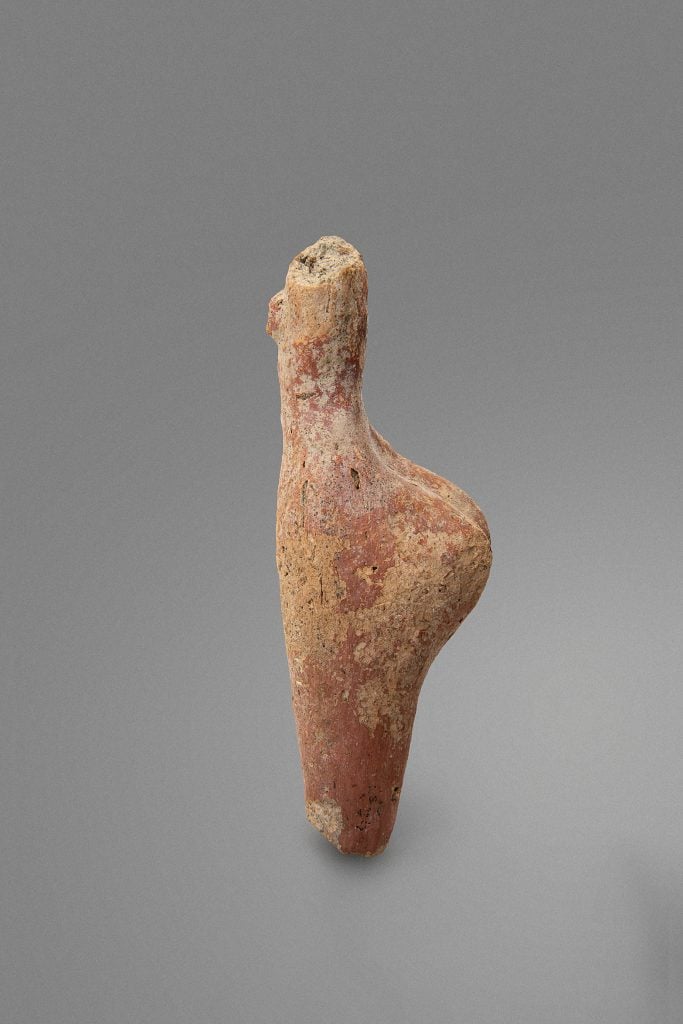
Female Figure, Ghana empire, Kumbi Saleh, Mauritania (7th–11th century). Terracotta. Collection of Office National des Museìes de Mauritanie, Nouakchott, Mauritania. Photo by Antoine Tempeì.
Figurative Representation in Ancient Ghana: “Were its discovery not carefully documented, this fragmentary figurine might be difficult to place. Modeled from humble clay, it is the only extant human depiction that brings to life a mighty state identified with precious gold: the storied ancient Ghana empire (ca. 300–1200). The slim waist, pronounced disc-like navel, and the dramatic sweep of rounded buttocks extending broad thighs constitute female bodily attributes universally associated with fertility and reproduction.”
The Lifeline of a Treasured Object: “Retained for centuries, it was cast off in an ancient garbage with the building of a stone mosque. Its state may reflect deliberate iconoclastic defacement and rejection of earlier held religious practices. The jettisoning of this once cherished votive item suggests concrete evidence of the major social change and shifts in political ideology experienced by Kumbi-Saleh’s citizenry.”
Commemorative Stela for Queen “M.s.r”
Gao-Saney, Mali
1119
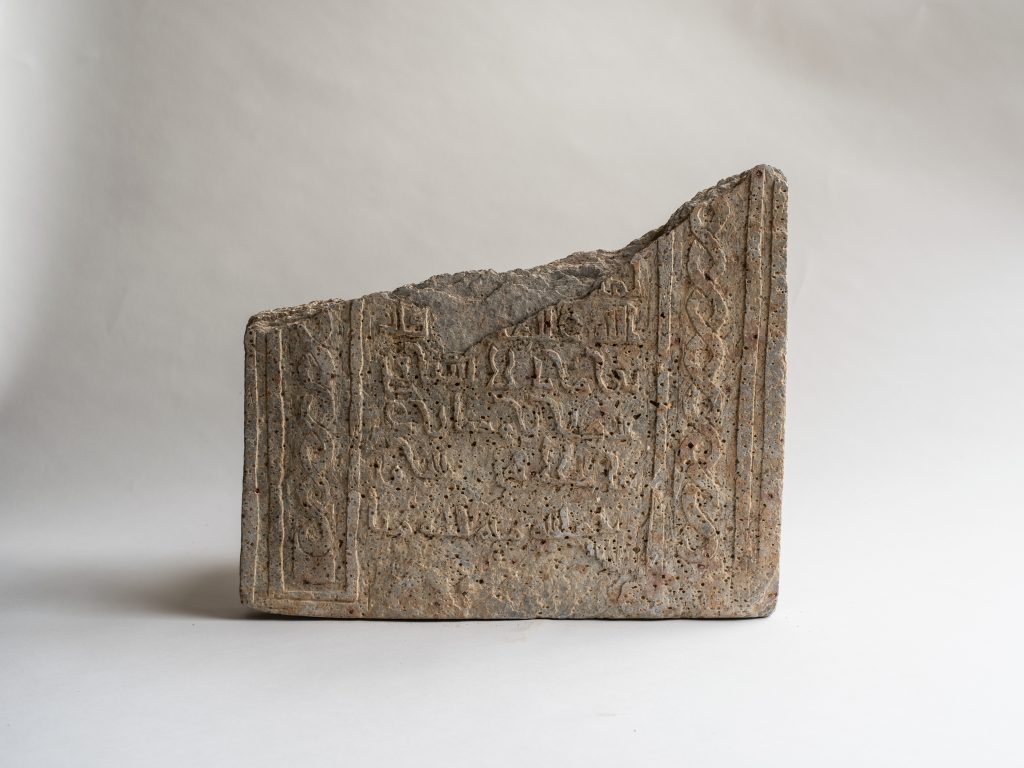
Commemorative Stela for Queen “M.s.r”, Gao-Saney, Mali (1119). Schist.
Collection of Institut Fondamental d’Afrique Noire Cheikh Anta Diop, Dakar, Senegal. Photo by Antoine Tempeì.
First Writings: “This stela constitutes one of the Sahel’s earliest known locally written texts. Islam’s arrival in the late 7th century introduced literacy and scriptural translation of regional languages. The epitaph of a female leader, the inscription is contemporaneous with the lives of a cast of royal figures otherwise unchronicled in the accounts of early Arab sources or the histories composed by Timbuktu scholars during the 17th century.”
Powerful Female Leaders: “Situated on the eastern arc of the Niger River Bend in present-day northern Mali, the site of Gao-Saney, was comprised of a major market town described in early Arab sources and a large Royal Cemetery. Among its early leaders were a number of women given the title of ‘malika,’ or queen, a role parallel to that of king. This high office was one that had originated outside Islamic culture but was nonetheless retained by Gao-Saney’s Muslim dynasty.”
Reclining Figure
Middle Niger civilization, Jenne-jeno, Mali
12th–14th century
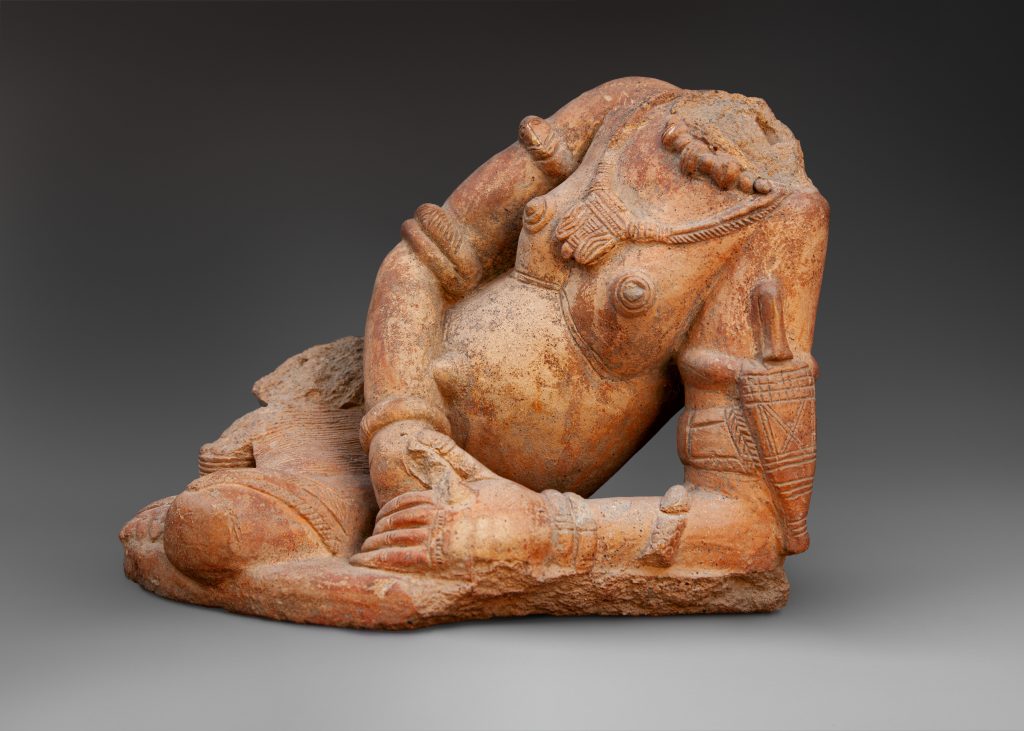
Reclining Figure Middle Niger civilization, Jenne-Jeno, Mali (12th–14th century). Terracotta. Collection of Museìe National du Mali, Bamako. Photo credit: Museìe National du Mali.
Sahelian Renaissance to a Reformation?: “This figure is among the few carefully documented discoveries of a major artistic movement and explosion of creative output that occurred across the Inland Niger Delta from the 12th through 14th centuries. The corpulence, reclining posture, and ornaments that bedeck this androgynous figure suggest a prosperous individual of social distinction.”
Cataclysmic Cultural Transformation: “Despite the care that went into this complex depiction of a potentate, it was deliberately decapitated before its disposal with the detritus of an abandoned sector of the city of Jenne-jeno during its final years, around 1400. We have no record of what precipitated either the efflorescence of artistic expression or the crisis that precipitated sudden abandonment of what had been a prosperous city of professionals. The establishment of the nearby modern city of Jenne at this very moment and the building of its Great Mosque, however, suggest this work’s fate reflects a major cultural shift in regional religious practices.”
“Sahel: Art and Empires on the Shores of the Sahara” is on view at the Metropolitan Museum of Art through October 26, 2020.
